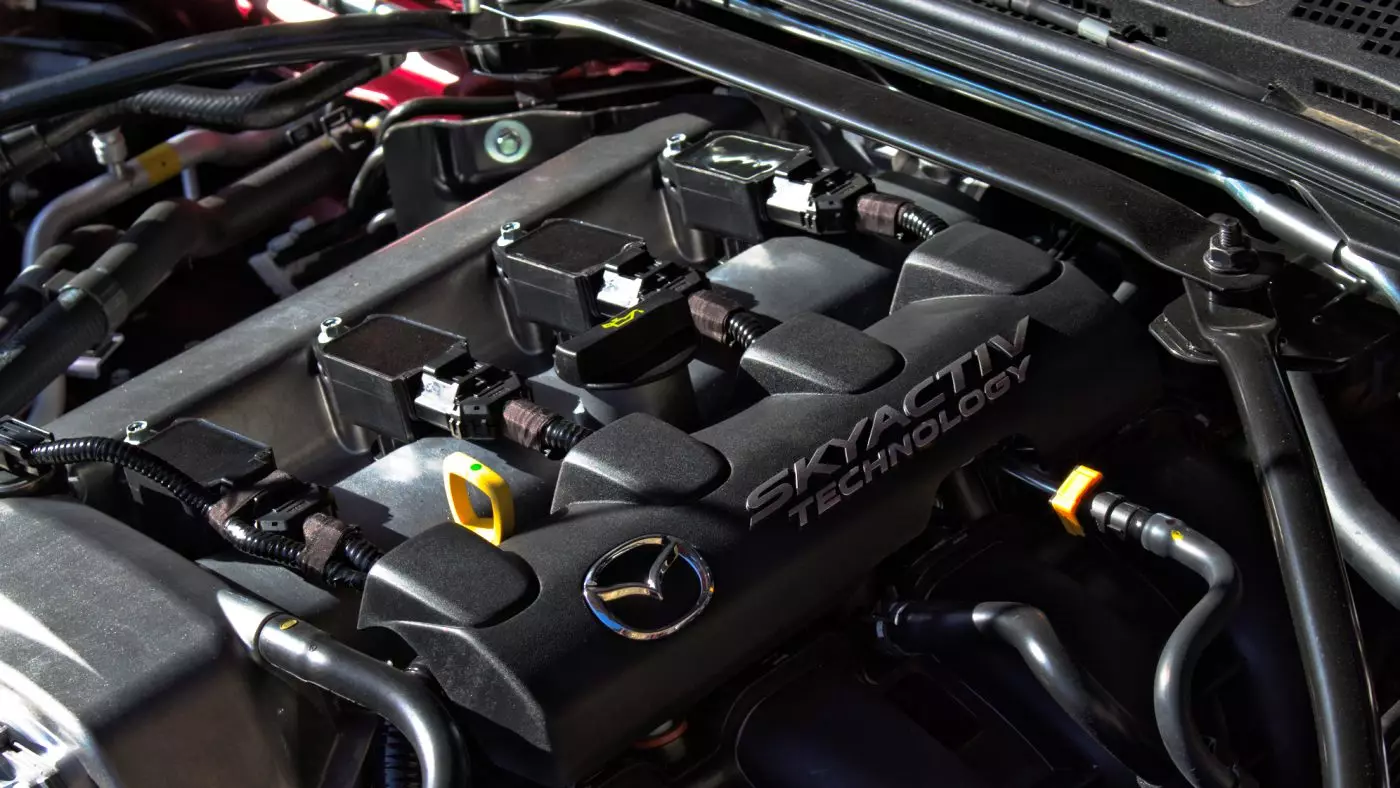Mazda seems to go its own way. The trend towards smaller (downsized) and turbocharged engines of recent years seems to have passed Mazda's side. The Japanese brand simply does not believe in their future.
Why?
Jay Chen, an engine engineer at Mazda, speaking to Road & Track during the last Los Angeles Motor Show, says the small engine and turbo strategy is simply “trying to achieve great fuel economy in a very small operating window”.Something that helps to achieve excellent numbers in homologation tests, but not in real driving conditions. Still, according to Chen, they turn out to be not very pleasant to drive.
As a demonstration of this, Chen says that the SKYACTIV engines — which comprise 1.5, 2.0 and 2.5 l displacements —, “in real conditions, our SKYACTIV engines outperform a small turbo engine in use and CO2“.
Internal combustion engine is to continue
“We believe the internal combustion engine is here to stay, we believe our approach is better,” says Chen. He also said that the strategy initiated by the brand in 2012 with the launch of the first SKYACTIV engine proved to be a success when Toyota acquired 5% of Mazda last August.
Jay Chen, engine engineer at MazdaThey are starting to see the benefits of how we do things. Obviously your new engine (Toyota) is quite similar to our SKYACTIV-G. They envy us and our ability to challenge and do things differently.
Given the results achieved, it is now clear why they are not following the path of small turbo engines, conventional hybrids and CVT (continuously variable boxes) — a popular solution in the US.

We are not against overfeeding
In addition to the Diesels, Mazda has in the catalog a single turbocharged SKYACTIV-G engine , which was premiered by CX-9 and it will also come to the Mazda6 magazine. It is its biggest and most powerful engine, and the use of turbo was aimed at recreating the same low revs availability characteristics of a V6 engine.Don't expect to see it under the hood of an MX-5 or a sporty Mazda3 version.
SKYACTIV-X
also the SKYACTIV-X , Mazda's revolutionary engine, uses a compressor — the brand calls it a “thin” or “poor” compressor, also alluding to its small dimensions, as it is not there for the purpose of increasing power. It has everything to do with the compression ignition that the new engine allows.
Again, Jay Chen:
To get compression-ignition, we're using 50:1 air-to-fuel ratios, so we need to get a lot more air. So the compressor is currently putting more air and re-circulated exhaust back into the cylinder, using the same amount of fuel.
Everything indicates that the first SKYACTIV-X engine hits the market in 2019, most likely with the successor to the Mazda3, of which we saw the prototype Kai at the last Tokyo Motor Show. Mazda believes its new SKYACTIV-X engine is a better option given the downsizing and turbos that currently dominate the market.
